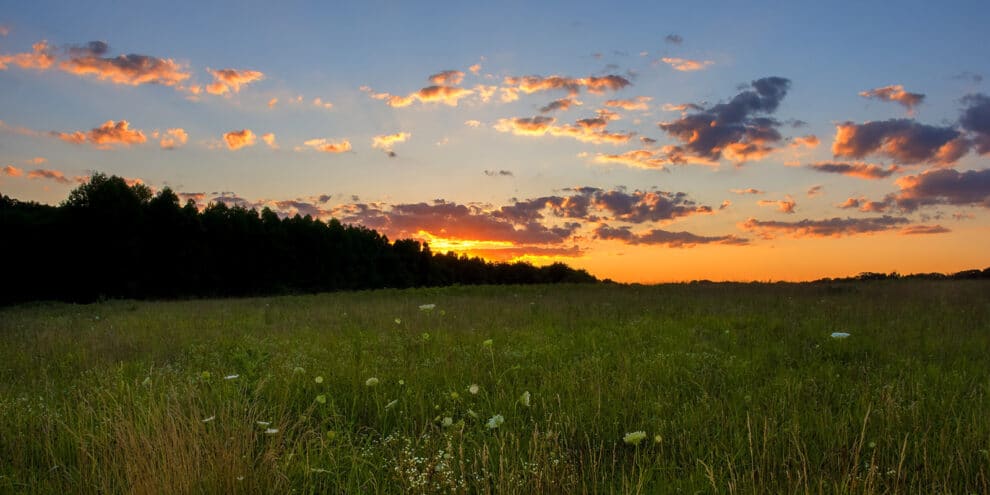Country living is back in vogue, thanks to the COVID-19 pandemic. While there are many advantages of living and working rurally, connectivity is not one of them. For many people in remote rural regions of the U.S., it’s like living in an undeveloped nation when it comes to internet connectivity.
Lack of high-speed internet access has been a concern for many years in rural America, but the pandemic exposed how deep the digital divide truly is between rural and urban residents, a divide that has also been a chief obstacle to farmers and ranchers for years. Nationwide, farmers and ranchers have struggled to get good enough internet connectivity to take full advantage of the technology that is available to them to boost profits, increase operational efficiency and optimize the use of farm inputs.
Why is high-speed broadband so scarce in rural areas? Number one, building broadband networks is incredibly expensive and difficult. Number two, there aren’t enough potential customers in rural areas to entice Internet Service Providers (ISPs) to invest in building those networks, and three, large-scale assessments by government agencies of American broadband access rely on FCC data, a notoriously inaccurate survey drawn from ISPs’ own descriptions of the areas they serve and that paint the situation in a better light.
In 2020 it become glaringly clear how essential internet availability is to all operations of daily life. Tens of millions of people in rural areas of the country lack the kind of fast or reliable connection they need for things like work, school, finding a job, getting news, and even telehealth.
The number of people who want to live in less-populated rural areas and want to work remotely is growing at a shocking rate, but a lack of broadband access makes doing so difficult. According to a survey conducted by Satellite Internet, 36% of Americans say bad or limited internet access is preventing them from moving to rural areas.
If lack of good internet options is what’s holding potential buyers back from purchasing their dream house in the country, rural land, farm, ranch, or off-grid property, Starlink might be the answer to connectivity. It is already delivering results, and according to the Starlink website, it is ideally suited for areas where connectivity has been unreliable or completely unavailable.
Starlink is the name of a satellite network developed by the private rocket and spaceflight company SpaceX, founded in 2015 by Elon Musk, to provide low-cost internet to remote locations. Starlink aims to bring high-speed satellite internet service to every corner of the Earth, except the North and South Poles. Starlink service is active in 48 U.S. states and is also available across 36 countries. It proved to be a game changer for Ukraine, when Musk donated an entire truckload of satellite dishes through Starlink. It gave Ukraine a lifeline in its war with Russia.
The first Starlink satellites launched in 2018, and the company already has over 500,000 Starlink subscribers globally that receive internet from around 2,600 satellites in low Earth orbit (LEO). SpaceX has permission to launch over 12,000 and plans to do so over the next five years. Starlink has applied to an international regulator for approval to loft up to 30,000 more. By 2027, Starlink could have more than 40,000 satellites in LEO action.
Starlink satellites can enable remote work for anybody that wants to live in remote areas. As long as the satellite dish has a view of the northern sky, Starlink can provide access to broadband. According to TechTarget, if the user has a generator, it can potentially keep working through power outages. SpaceX also announced it “Deployed basic Snow Melt Mode” to the Dishy McFlatFace Starlink antenna (nicknamed by company) “during which Starlink [dish] produces additional heat to mitigate signal attenuation caused by snow build-up on the face of the user terminal.”
Starlink hopes to capture a base of hard-to-reach customers with high-speed internet at a pace less than 5G, but possibly 10 times faster than 4G LTE. SpaceX claims that users can expect speeds somewhere around 150 and 500 megabits per second.
Starlink currently offers three internet plans: Starlink, Starlink RV, and Starlink Business. Download speeds for these plans range from 50–500 Mbps for $110–$500 a month with unlimited data and no contracts or cancellation fees. It’s the upfront expense that will hit your wallet hardest with Starlink. There’s a one-time hardware cost of $599, which is sold to customers at a loss, but Musk has previously said he hopes these costs can come down.
Starlink has made its dishes user-friendly and simple to install. It comes pre-connected with everything you need to access the internet. To connect, download the Starlink App.
The pandemic sparked millions of Americans to reconsider urban living and set their sights on suburbs, small towns, and rural areas. People are rethinking where they want to live and searching for rural homesteads where they can incorporate homeschooling, working from home, and living off the land. Working from home will impact rural America now and into the future and rural areas with good, reliable, internet access will continue to attract more new residents.
So, is Starlink satellite internet worth it for those who want to live and work where they want? All signs point to a resounding “yes.”
This content may not be used or reproduced in any manner whatsoever, in part or in whole, without written permission of LANDTHINK. Use of this content without permission is a violation of federal copyright law. The articles, posts, comments, opinions and information provided by LANDTHINK are for informational and research purposes only and DOES NOT substitute or coincide with the advice of an attorney, accountant, real estate broker or any other licensed real estate professional. LANDTHINK strongly advises visitors and readers to seek their own professional guidance and advice related to buying, investing in or selling real estate.










I am a Starlink user. Love it. Best system we have ever had for Internet here in rural east central AL. However it’s usefulness is being threatened by Dish Network trying to claim part of the “channels” used by Starlink. Starlink expects it to render their system useless 70+ percent of the time if the FCC grants this to Dish. It is in review now. My thoughts are that Dish has lost alot of TV customers because good internet and cheaper TV services are taking a bite. This looks like a backdoor way for them to fight that. I canceled Dish a couple years ago and ran my TV service on Verizon MiFi until we got Starlink. I do not want to go back to the Mifi or Dish. Starlink’s service is far superior.